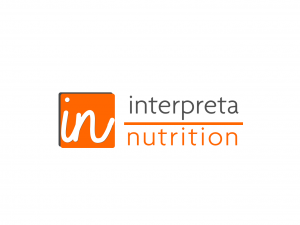
SACN report recommends halving sugar in diet: how should the food industry respond?
Interpreta Nutrition shared its views on SACN’s report on carbohydrates and health in the latest issue of Table Talk (Issue 2, 31 July 2015), the newsletter from Food Matters Live featuring a round-up of news, views and insight from the world of food, health and nutrition (see www.foodmatterslive.com).
The Scientific Advisory Committee on Nutrition (SACN)’s long-awaited report on carbohydrates and health was published recently, reinvigorating the debate about the impact of the UK’s high sugars intake on the nation’s health. Some have expressed concern about how the recommendations translate into easily understood public health messages and the limitations of the current labelling rules to inform consumer choice. As Dietitians working with the food industry, we offer our perspective on some of the implications of SACN’s recommendations on free sugars intake.
SACN’s report on the links between consumption of carbohydrates, sugars, starch and fibre and a range of health outcomes, published on 17th July 2015, represents a thorough review of the evidence base and has been broadly welcomed. As well as recommending that starchy carbohydrate intakes be maintained and fibre intakes increased, SACN makes some specific recommendations on sugars intakes, which are as follows:
- The average population intake of free sugars should account for no more than 5% daily dietary energy intake.
- The term free sugars is adopted, replacing the terms Non Milk Extrinsic Sugars (NMES) and added sugars.
- The consumption of sugar-sweetened beverages (e.g. fizzy drinks, soft drinks and squash) should be minimised by both children and adults.
The recommendation that free sugars intake should account for no more than 5% daily dietary energy intake (equivalent to no more than 30g free sugars/d for adults) is based on evidence that overconsumption of free sugars contributes to increased total energy intakes and dental caries incidence, in particular in children. Current intakes of free sugars are on average 2-3 times higher than this new recommendation. Therefore, achieving this recommendation will be a considerable challenge as it requires substantial changes in food consumption patterns in the UK. The British Nutrition Foundation has done some dietary modelling to illustrate how these and other dietary recommendations might be met in terms of food choices, and they acknowledge that the suggested meal plans they have drawn up are not typical of what most people in the UK eat.
The adoption of the term free sugars (all monosaccharides and disaccharides added to foods by the manufacturer, cook or consumer plus sugars naturally present in honey, syrups and unsweetened fruit juices) has been widely welcomed, aligning it with the terminology used in the recently published World Health Organisation’s report. However a need arises for consumer education on the new terminology and what the recommendations mean in terms of dietary changes. In due course, Public Health England (PHE) will consider the implications of the recommendations in SACN’s report for its advice on what makes up a healthy diet. For the time being, PHE has targeted its message at sugary drinks, and has called on parents and families to reduce intakes of sugar-sweetened beverages in their children’s daily diet.
Food labelling legislation in the EU prescribes how nutrition information is presented on food labels. The issue of labelling is outside of SACN’s remit and current EU-wide rules define sugars as all monosaccharides and disaccharides, irrespective of their status as free sugars, milk sugars or intrinsic sugars. The Guideline Daily Amount for total sugars for labelling purposes is 90g/d, with no provision for the labelling of free sugars. Consumers will need to estimate what proportion of the total sugars content is free sugars, perhaps by using the ingredients list to identify sources. Clearly this is a lot to expect of consumers, and the food industry should find other ways of informing and educating the public on the free sugars content of their products. In taking a consistent approach, the food industry will have to navigate its way through a number of conundrums – such as how should the sugars in fruit smoothies and purees be regarded? SACN states that these products contain free sugars, although a proportion of the sugars may still be contained within the cellular structure of the fruit. Some anomalies also arise out of the definition of free sugars – take soy milk sweetened with lactose compared to regular cow’s milk. The lactose in the soy milk would be considered a source of free sugars whereas the lactose in cow’s milk would not.
As Dietitians, we think in terms of the foods as well as nutrients and the diet as a whole needs to be considered. Consumers should take these new recommendations into account when making food choices, but should also consider other dietary recommendations (e.g. on energy, fat and saturates intakes) when weighing up suitable alternatives to foods high in sugars. Obesity in the developed world has proved very difficult to address effectively at a population level. Partnerships between health workers, the food industry, Government and local authorities are needed if a sustained downward trend in levels of obesity is to be realised. The food industry should continue to do its part in working towards reducing sugars in its products under the commitments it has made as part of the Public Health Responsibility Deal and in developing innovative solutions.
